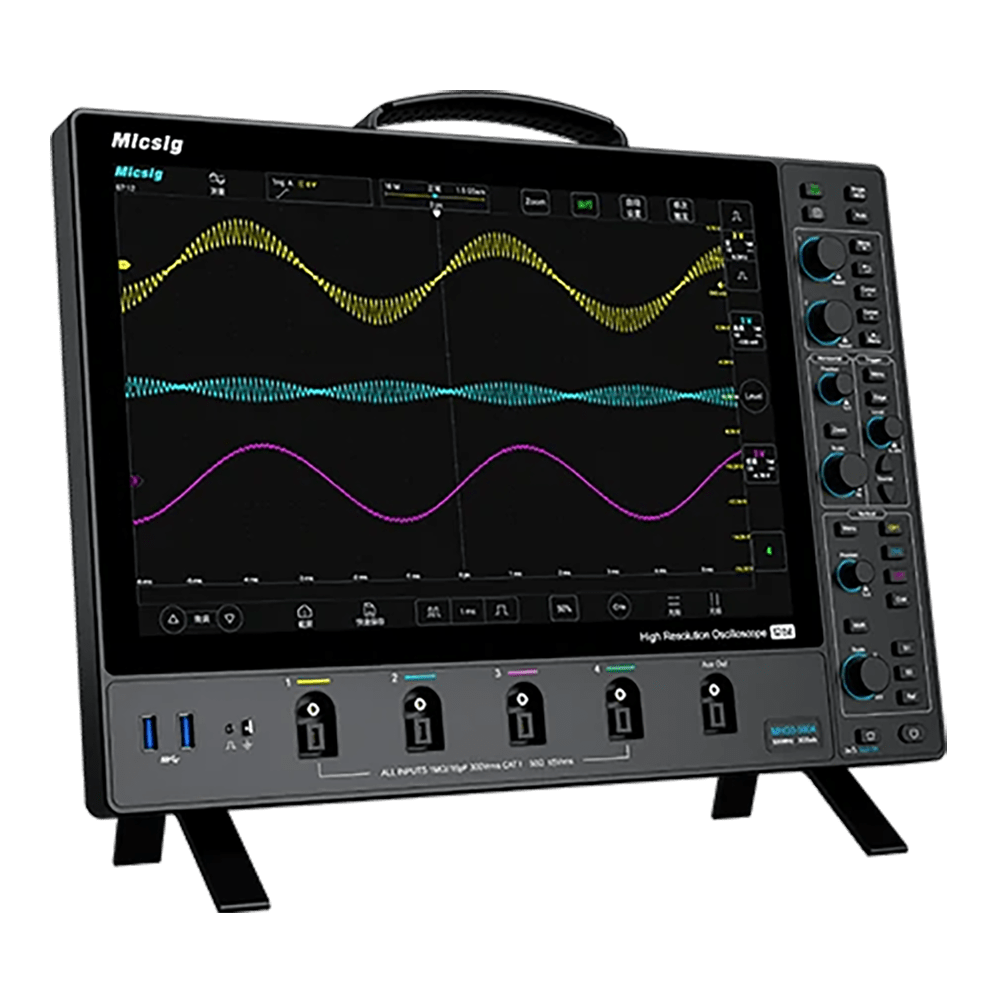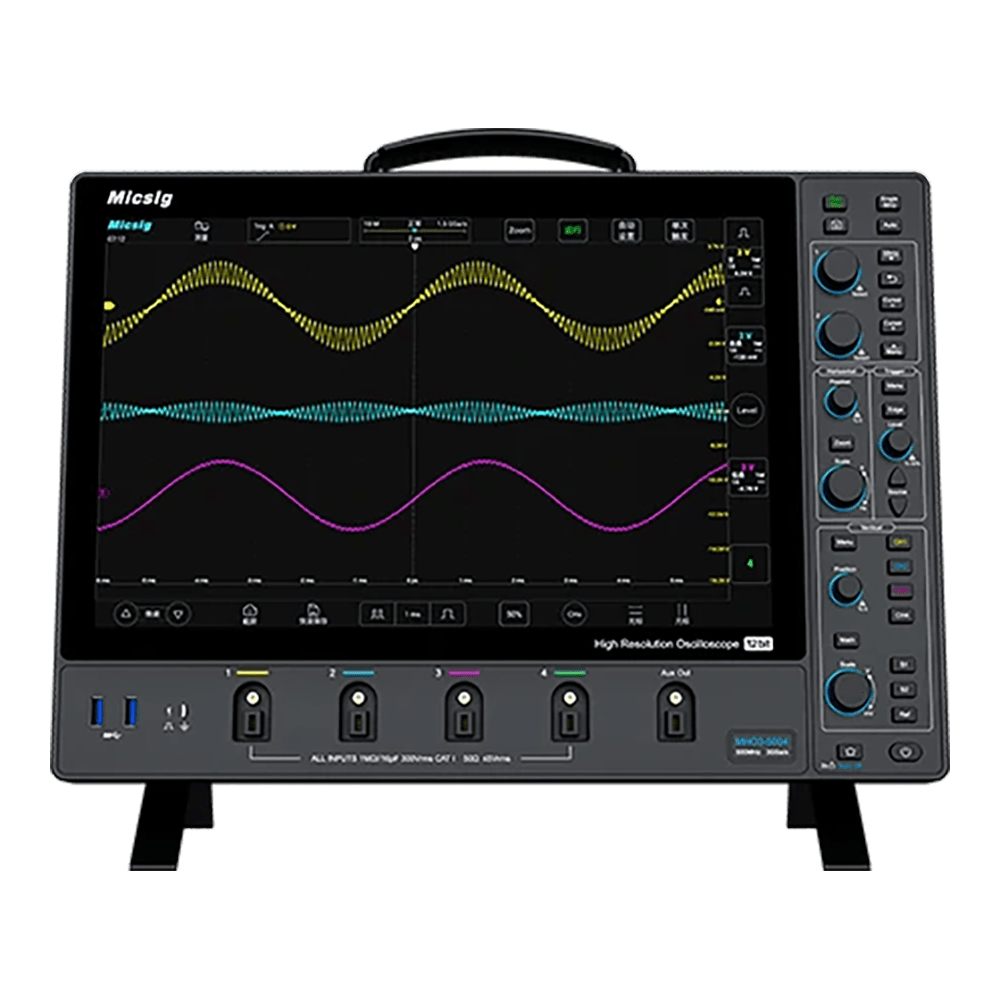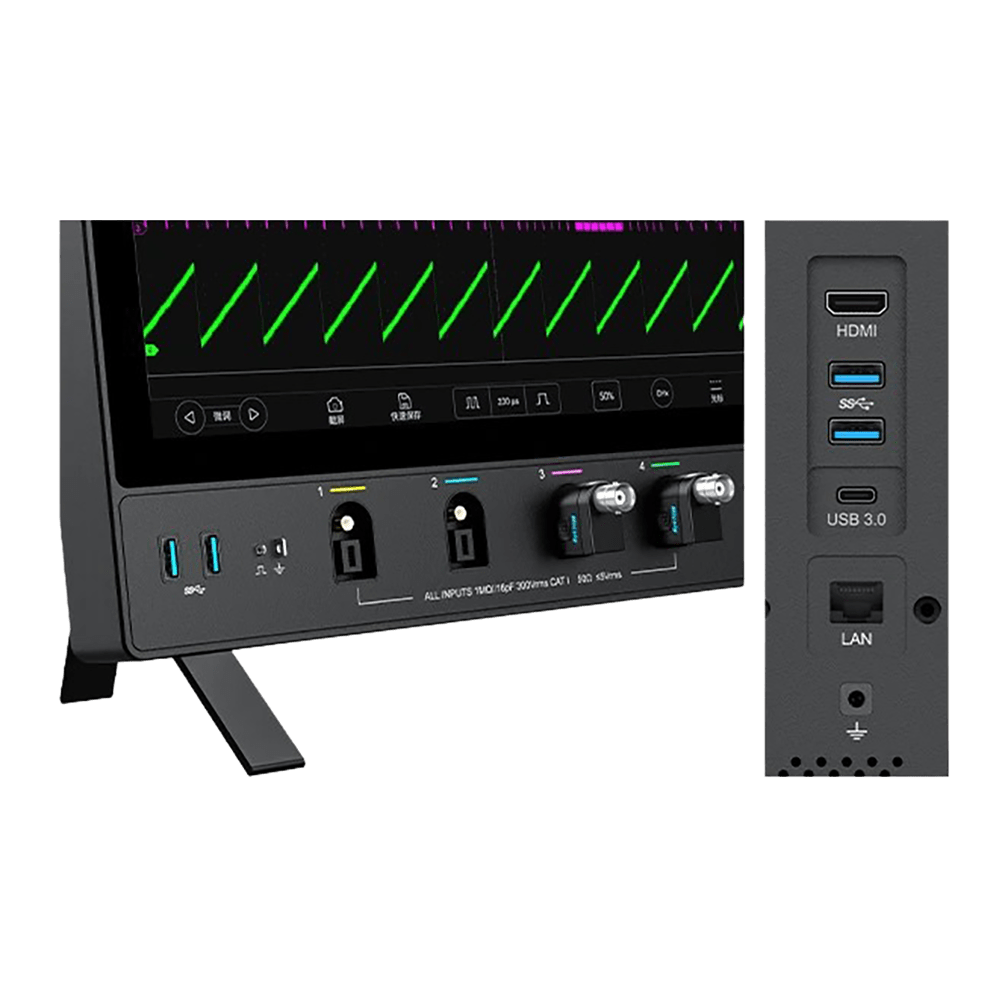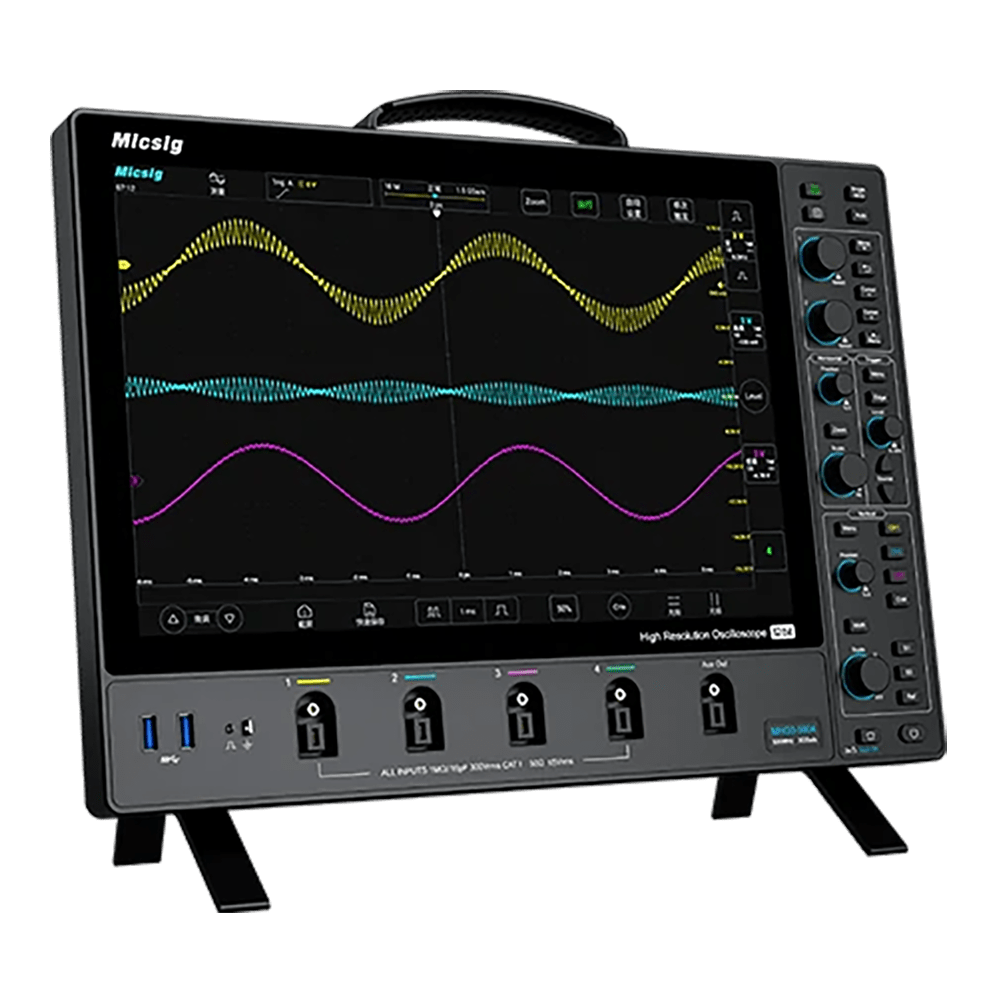
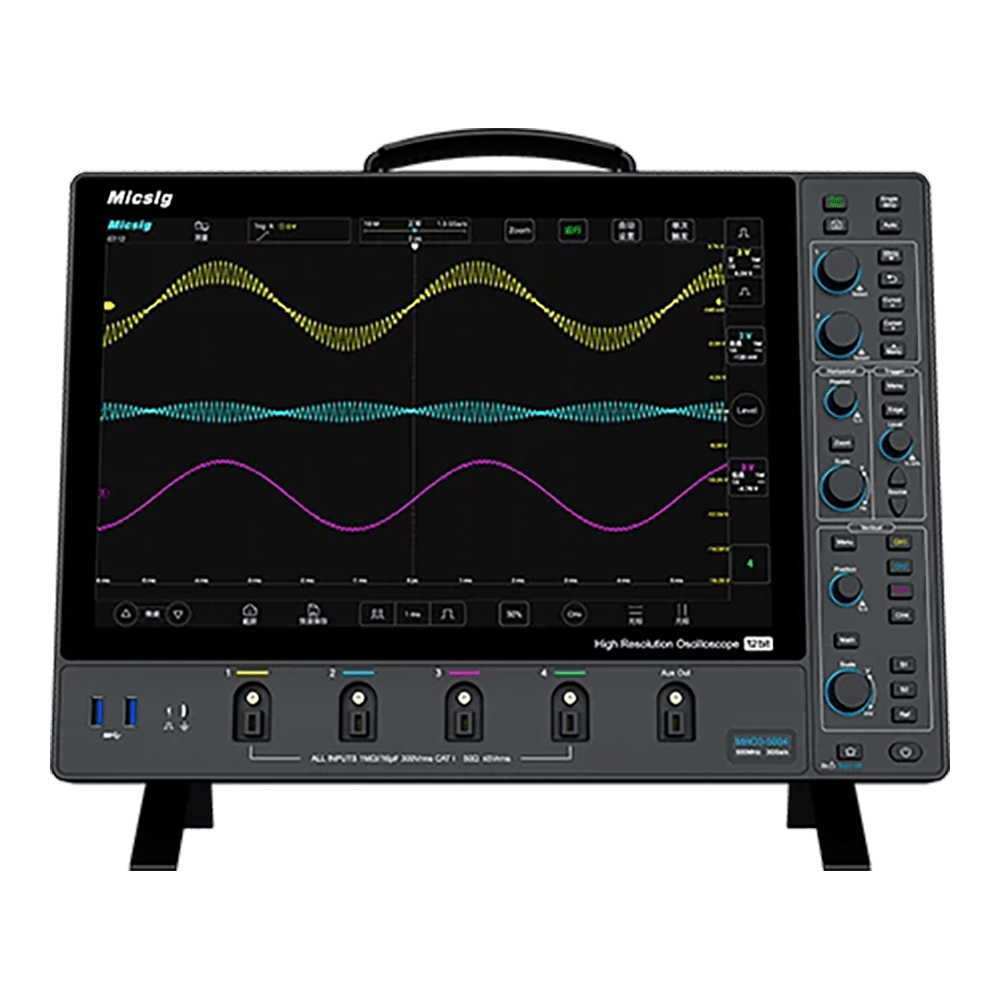

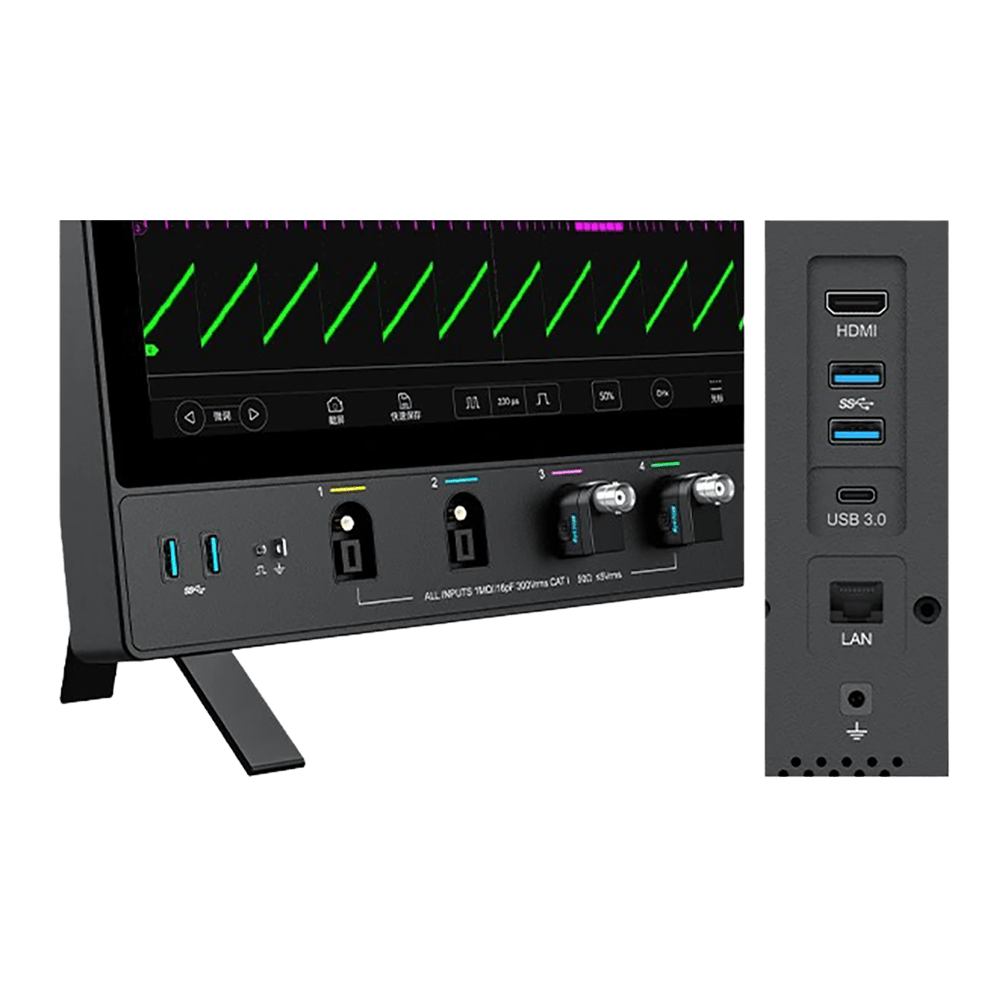
Key Features
Overview
The Micsig MHO3 Series represents a significant advancement in oscilloscope technology, offering professional design engineers unparalleled precision and versatility. With a 500MHz bandwidth, 3GSa/s sampling rate, and 12-bit vertical resolution, this high-performance instrument delivers exceptional signal fidelity and detail.
Key features include a 14-inch touchscreen with 1920x1200 resolution, providing an intuitive interface for complex waveform analysis. The 360Mpts memory depth, combined with segmented storage acquisition, allows for comprehensive long-term signal capture and playback.
Engineers will appreciate the low noise floor of less than 80μVrms at full bandwidth, enabling accurate detection of weak signals. The hardware digital filter offers selective frequency analysis, while the Mic-OPI™ probe interface ensures seamless integration with a wide range of Micsig probes.
Designed for modern workflows, the MHO3 Series boasts extensive connectivity options, including USB 3.0, LAN, and HDMI. Its ultra-thin 3.58cm profile supports VESA mounting, making it adaptable to various laboratory setups.
For design engineers seeking a cutting-edge oscilloscope that combines high resolution, deep memory, and user-friendly operation, the Micsig MHO3 Series stands as an indispensable tool for advanced signal analysis and debugging.
Downloads
Frequently Asked Questions
Have a Question?
Be the first to ask a question about this.

